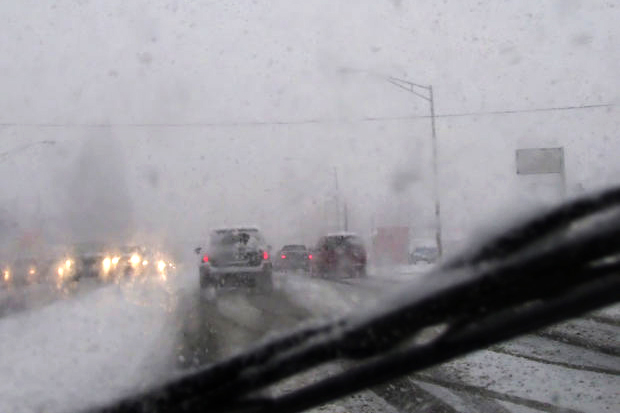Safety Tips For Driving On Ice
- February 25, 2015
- Dealership Ohio
- Posted by LukeS
- Comments Off on Safety Tips For Driving On Ice
Safety Tips For Driving On Ice
Winter driving conditions mean more than just delays. Icy conditions can create dangers for drivers and their passengers. Ice alone contributes to 12% of all accidents each year. Prepare your car and yourself before heading out on winter roads with these tips.

The most important step for winter driving is to be prepared. Weather conditions can change almost instantly, and you’ll want your automobile in top shape. Make sure your car is equipped with winter weather tires. Low temperatures make normal tires to harden, causing a loss in traction and control. Winter tires stay flexible and have specialized treads that do not hold snow. Be sure to top off your antifreeze and properly defrost all windows before heading out. Take the initiative and put together a small emergency kit with thick gloves, a heavy duty flashlight and something to help you gain traction if you veer off road.
Ice can build up anywhere, but along roadways it takes a more sinister form. As snow melts during the day, it gets mixed with all the oils and grit from the road. When it refreezes at night, it produces black ice which is nearly identical in color to the asphalt. This becomes even more dangerous in the afternoon when the ice becomes slick from the heat of the day.
The most common places to run into black ice are bridges and overpasses. Normal roadways retain some insulated heat from the ground they are built upon. However, bridges are exposed from the bottom up as cold air flows under them. Roadway temperatures for an overpass can drop an additional 14 degrees in windy conditions. Even in above freezing conditions, bridges can harbor ice. Take precautions and slow down. Assume every overpass in weather 40 degrees and below can contain ice.
When driving on ice can’t be avoided, never exceed 45 miles per hour. Even the best drivers with all the equipment needed have trouble recovering from a skid at high speeds. If you need to slow down, do so gradually. If you don’t have anti-lock brakes, pump them lightly and rhythmically to avoid locking up the tires. If you find your car drifting, take your foot off the throttle and steer gently into the skid. Only apply gas once you feel the car regain traction.
If you have an accident or drift off road, assume that all other drives will lose control the same way you did. If you’re not stuck, drive to a nearby safe location and assess the damage there. Do not get out of your car as other vehicles can lose control and hit you. If your car is stuck, stay inside and wait for assistance.
way to avoid icy conditions is to avoid them entirely. Stay inside until conditions improve, and if you feel hesitant driving in your current situation, its okay to stop.

